Nicholas K Spring 2014 Show — A Tribute to the Apache Nation
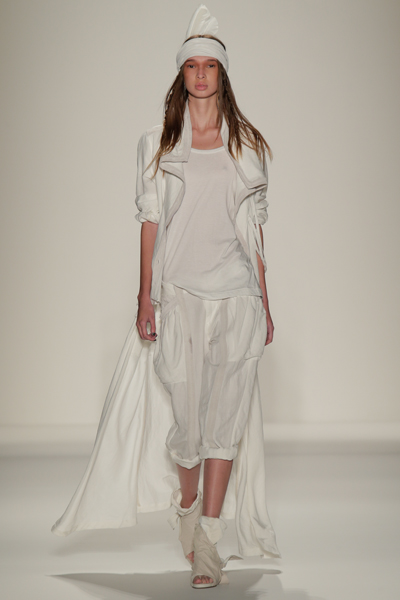
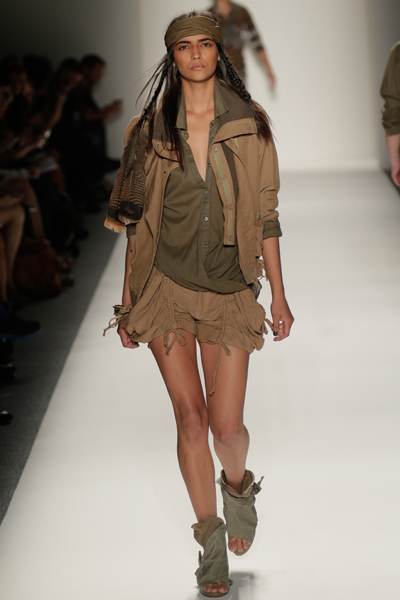
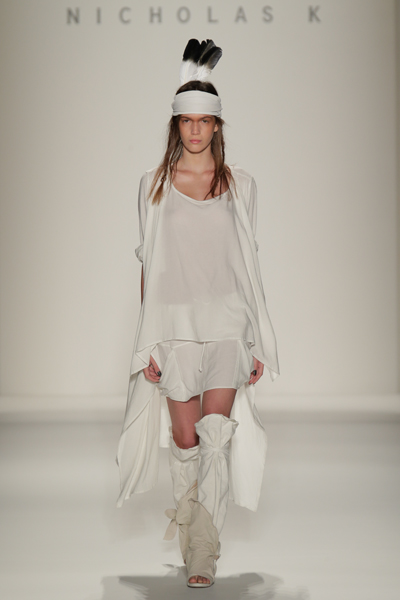
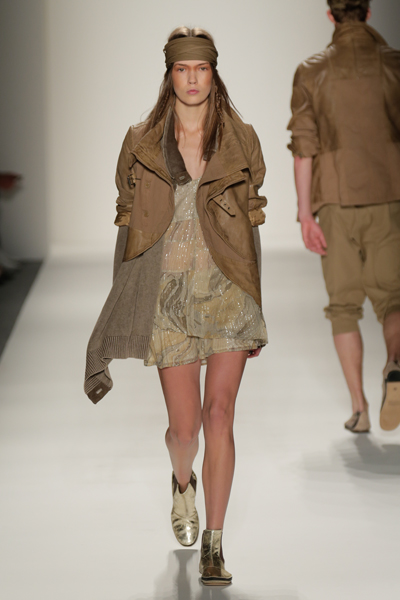
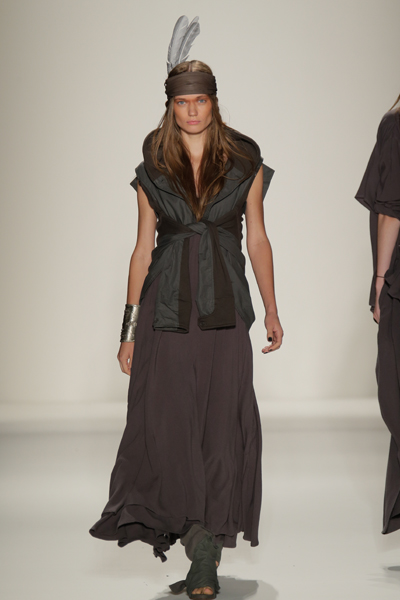
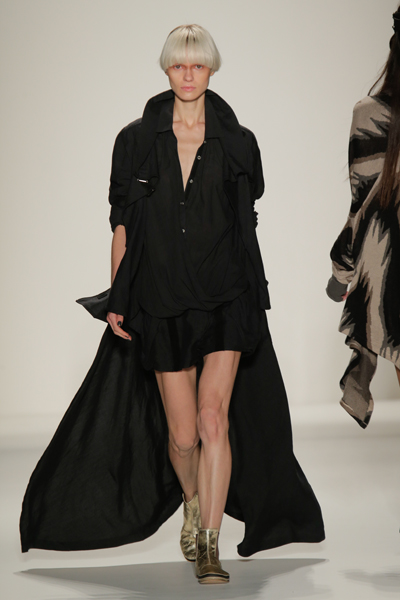
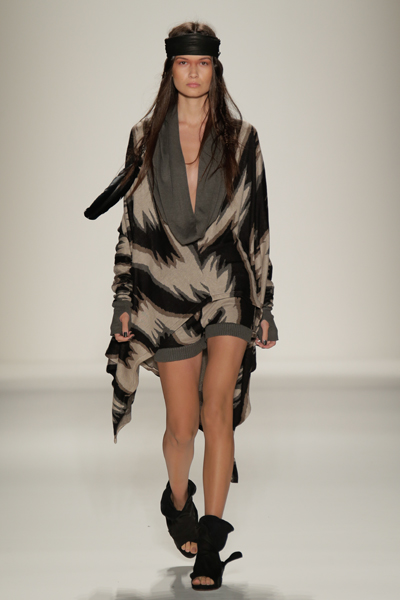
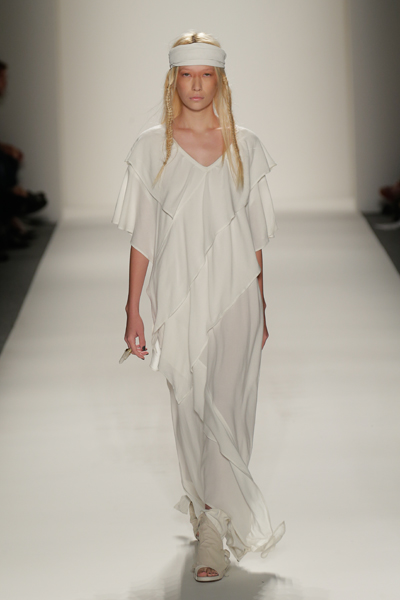
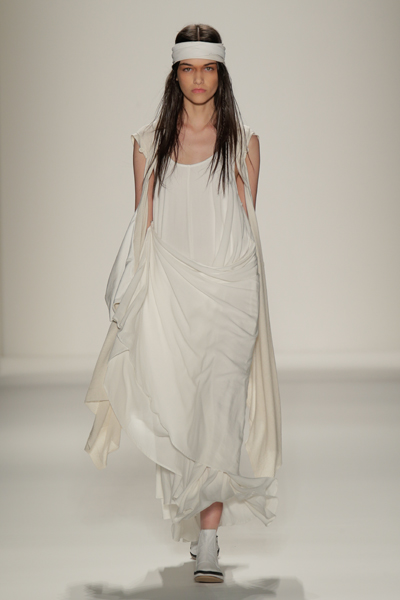
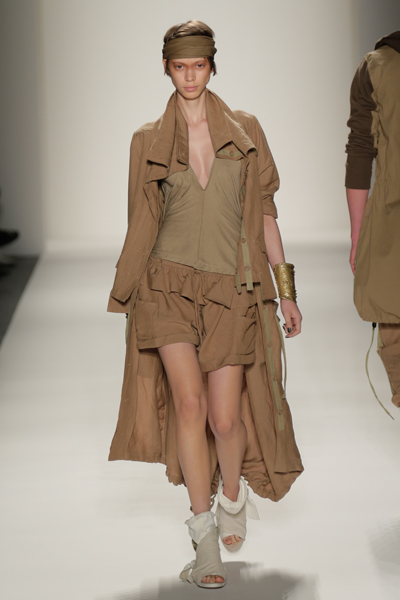
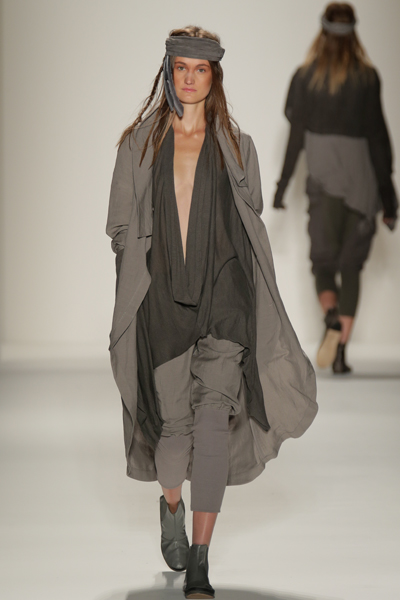
The brother-and-sister design team comprising 10-year-old New York City-based brand Nicholas K, Nicholas and Christopher Kunz embarked upon a journey through a reservation in Central Arizona and, in the process, found inspiration for their brand’s Spring 2014 collection. In particular, the siblings focused on the spiritual belief system of the Western Apache people and the agents of powers within each tribe: the shamans or diyins.
Given the brand’s fascination with explorers and nomadic peoples, the Apache framework seemed like a perfect fit — particularly given the designers’ penchant for layering and their love of neutral hues and soft landscape-inspired prints. The Nicholas K Spring 2014 collection, then, incorporated bone whites, deep sandy khakis, soft taupes, olive greens, sienna browns, smoky grays, and blacks. These colors were deliberate choices grounded in the Apache’s creation myth and in their elaborate religious ceremonies. According to their creation tale, in the beginning there was only darkness — that is, until one day, a small disc with one yellow side and one white side appeared in the air, and propped atop it was a bearded man responsible for all creation, The Man Who Lives Above. Having awoken from his slumber, light appears and The One Who Lives Above goes about creating everything — the clouds, the Earth, other gods, animals, plants, and more — with his sweat, often singing about each new creation four times in order for it to manifest itself. The colors white, blue, yellow, and black play a prominent role in this creation story and most of them are seen in the collection — with turquoise being used as an accent color and yellow appearing in some of the shimmering, semi-sheer, gauzy prints.
The abundance of white could very well be a reference to the White Painted Woman, an ancestral spirit that girls personify during the Sunrise Ceremony, a four-day ritual that follows girls’ first menses and is meant to celebrate their transition from infancy to womanhood. During one of the final parts of this ceremony, the young girl’s head and face are painted with a whitewash mixture of ash, herbs, and water, a part of her symbolic transformation into the White Painted Woman and a pivotal part of her journey into womanhood.
Earthier camel, taupe, and sandy brown hues, meanwhile, reference not only to desert landscape but also the teepees made of Buffalo hides, the mud-covered hogan dwellings, and the wickiup dwellings made with branches and covered with brush and even Buffalo hide.
The color black, meanwhile, could reference obsidian gemstones, believed to have curative properties and to block negative energy. The San Carlos Apache Reservation in Arizona even produces a variety of obsidian known as “Apache tears,” which attests to the stone’s cultural significance within this tribe.
For the purpose of the runway show, there were some styling elements that were a bit on-the-nose yet clearly conveyed the unifying theme of the collection — mainly, of course, the dip-dyed turkey quills tucked into wide headbands so as to represent headdresses or dangling from infinity scarves and even loose hair strands. Still, when deconstructed, the pieces felt highly consistent with the urban nomad aesthetic we’ve come to associate with Nicholas K: slouchy khaki shorts with ruffled waistlines or featuring large utility pockets and drawstrings to adjust their length, lightweight trench coats with draped collars and high-low hemlines, long tunics with exaggerated cowl necklines, leather jackets with rounded lapels and interesting textural juxtapositions, and more.
Since a flowing, lightweight, desert-ready quality was essential to each piece in the collection, the fabrics used were mainly matte gauze, linen, cotton, suede, deerskin, and the occasional shimmering lurex to represent desert stones covered in glistening mica.
Many pieces in the collection could very well be staples within a Bohemian city slicker’s wardrobe — particularly the trenches, jackets, and draped sweaters — while others seem best suited for theatrical purposes only (particularly the multi-layered white dresses, which sometimes felt a bit too haphazardly put together, as if fashioned out of bedsheets). But overall, once deconstructed, the collection’s commercial appeal became incredibly apparent and yet it all worked with the overarching storyline.







